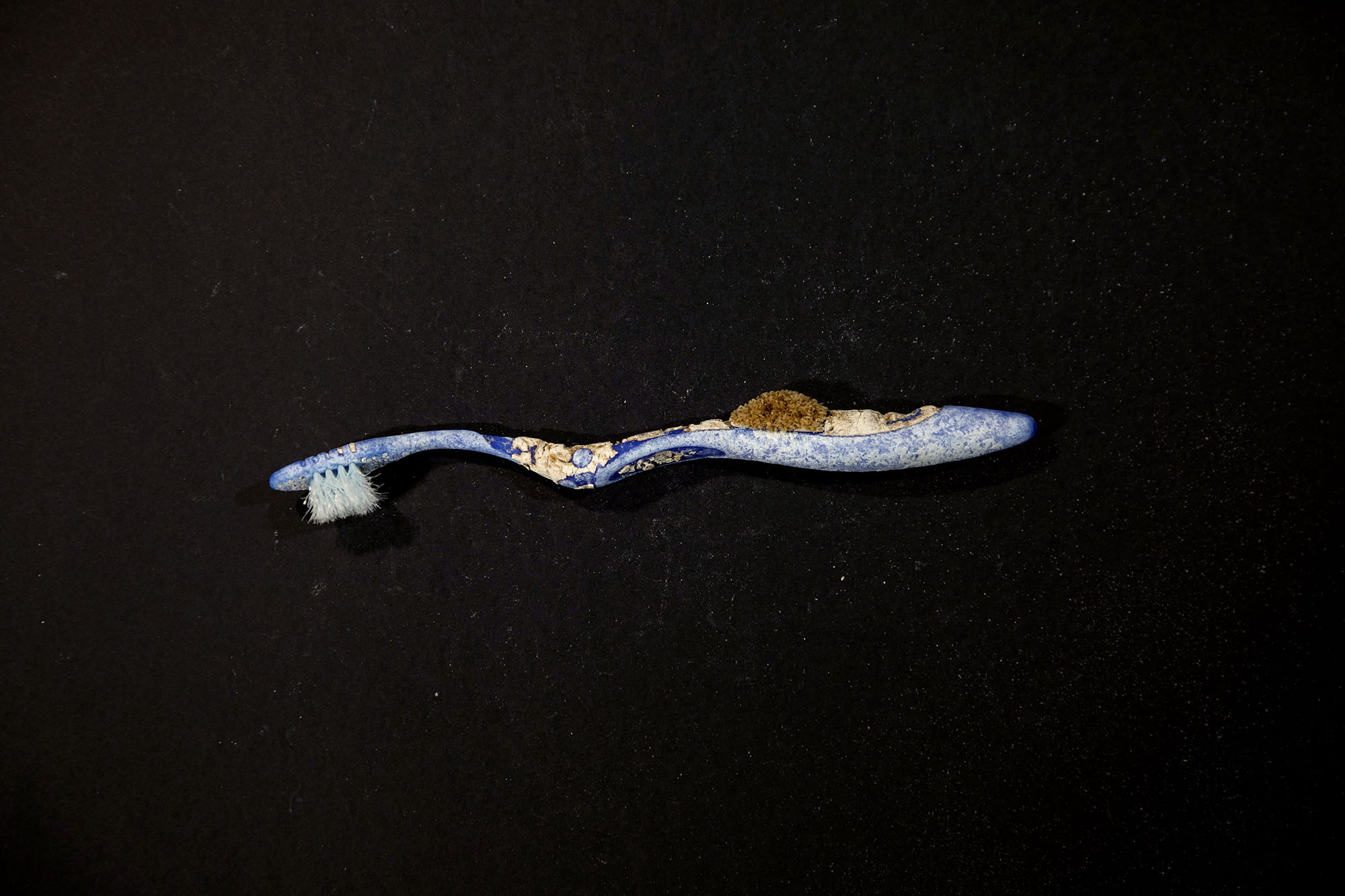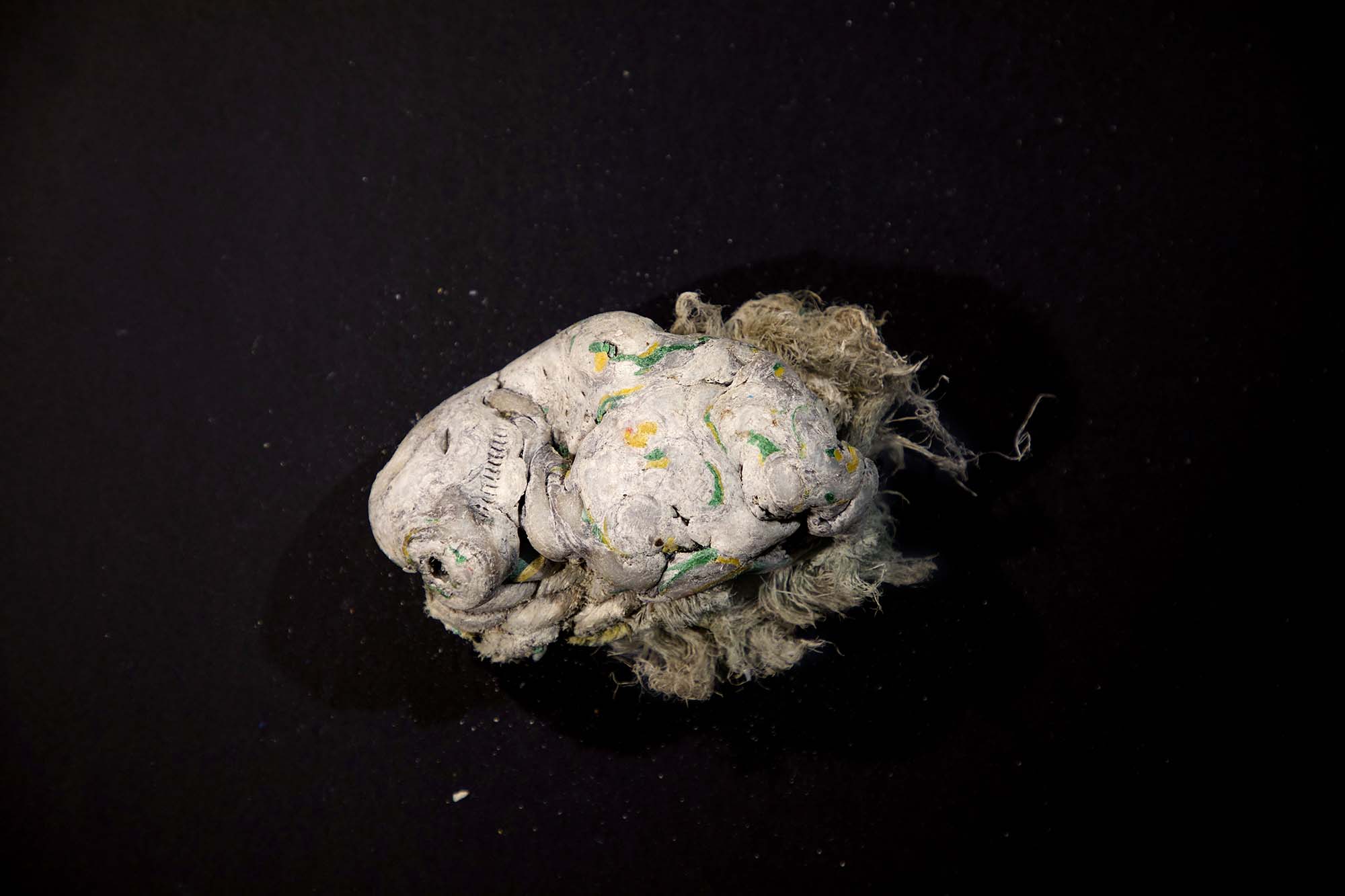2019–2021
Tracing Afterlives: Visualising the deep time persistence
of plastic waste
A fateful encounter with warped plastic waste while volunteering prompted a realisation of just how long plastics can exist for. Collected by ocean clean-up organisation Eco Barge Clean Seas Inc., the warped plastics found provided witnessable evidence of how plastics persist after humans. The slow material changes to these plastics—warping, melting and clusters of marine growths—could potentially be interpreted to form stories that visualise, communicate and open up conversation about the longevity of plastic.
This hypothesis formed the basis of a Master of Design (Research) thesis at the University of Technology Sydney. Over the course of two years, design experiments with the warped plastics were undertaken to explore, identify and highlight potential storytelling methods designers might use for facilitating conversation and creating change in consumers.
See the full project here.
This project is a continuation of the research began in Plastic.
Tracing Afterlives: Visualising the deep time persistence
of plastic waste
A fateful encounter with warped plastic waste while volunteering prompted a realisation of just how long plastics can exist for. Collected by ocean clean-up organisation Eco Barge Clean Seas Inc., the warped plastics found provided witnessable evidence of how plastics persist after humans. The slow material changes to these plastics—warping, melting and clusters of marine growths—could potentially be interpreted to form stories that visualise, communicate and open up conversation about the longevity of plastic.
This hypothesis formed the basis of a Master of Design (Research) thesis at the University of Technology Sydney. Over the course of two years, design experiments with the warped plastics were undertaken to explore, identify and highlight potential storytelling methods designers might use for facilitating conversation and creating change in consumers.
See the full project here.
This project is a continuation of the research began in Plastic.





2019–2021
Tracing Afterlives: Visualising the deep time persistence
of plastic waste
A fateful encounter with warped plastic waste while volunteering prompted a realisation of just how long plastics can exist for. Collected by ocean clean-up organisation Eco Barge Clean Seas Inc., the warped plastics found provided witnessable evidence of how plastics persist after humans. The slow material changes to these plastics—warping, melting and clusters of marine growths—could potentially be interpreted to form stories that visualise, communicate and open up conversation about the longevity of plastic.
This hypothesis formed the basis of a Master of Design (Research) thesis at the University of Technology Sydney. Over the course of two years, design experiments with the warped plastics were undertaken to explore, identify and highlight potential storytelling methods designers might use for facilitating conversation and creating change in consumers.
See the full project here.
This project is a continuation of the research began in Plastic.
Tracing Afterlives: Visualising the deep time persistence
of plastic waste
A fateful encounter with warped plastic waste while volunteering prompted a realisation of just how long plastics can exist for. Collected by ocean clean-up organisation Eco Barge Clean Seas Inc., the warped plastics found provided witnessable evidence of how plastics persist after humans. The slow material changes to these plastics—warping, melting and clusters of marine growths—could potentially be interpreted to form stories that visualise, communicate and open up conversation about the longevity of plastic.
This hypothesis formed the basis of a Master of Design (Research) thesis at the University of Technology Sydney. Over the course of two years, design experiments with the warped plastics were undertaken to explore, identify and highlight potential storytelling methods designers might use for facilitating conversation and creating change in consumers.
See the full project here.
This project is a continuation of the research began in Plastic.




